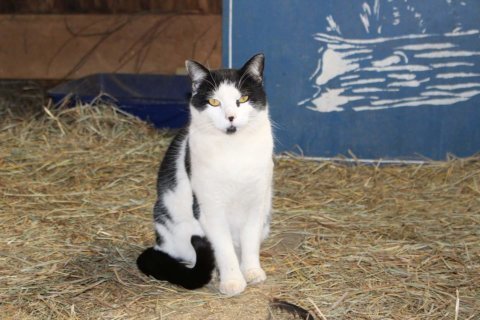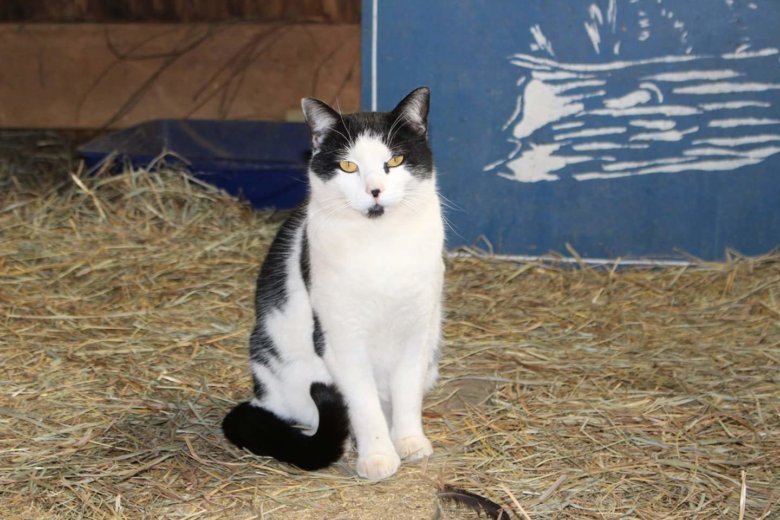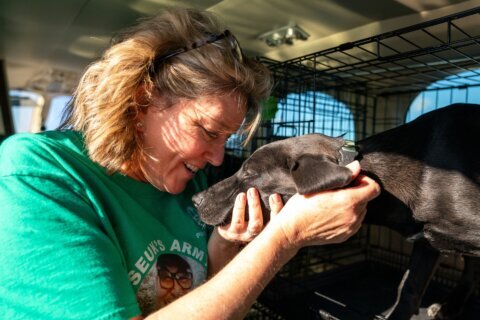
WASHINGTON — How many cats live in the District? A three-year, $1.5 million study is set to find out.
The DC Cat Count is a collaboration among animal welfare groups and wildlife scientists that seeks to count the number of cats in D.C., including feral cats, house pets and cats in shelters.
Lauren Lipsey, vice president of community programs at the Humane Rescue Alliance, told WTOP Thursday that the goal of the study is to “really get at an issue that can be controversial, but in which we’re all invested: What is the state of cats in our community?”
“[A]lthough outdoor cats are the focus of current controversies, the cat population in any area is actually an interconnected and dynamic network [composed] of unowned cats living outdoors, owned cats who may live either indoors or outdoors, and shelter cats who often move into or out of the other population segments. Therefore, the project is composed of several distinct, but complementary, components designed to characterize all of these population segments and how they interact with one another,” project organizers said on their website.
Lipsey gave examples of some of the questions the count is designed to answer: “Cats who are owned — are they going in and out? Are they ending up in our shelter? Shelter cats who are being adopted – is that where most people are getting their cats? Are they getting them off the street? And ultimately, how many cats are living outside?”
The alliance’s policy toward non-social, un-adoptable cats has been “trap-neuter-return,” Lipsey said, “but are we getting to most of them?”
The only data they have is shelter data about cats going in and going out. “That doesn’t tell us anything about everything else that’s going on, outside of any engagement with the services we provide. That’s an unknown, and I think it’s an unknown in a lot of communities.”
Wildlife scientists have methods for counting animals in nature, the organizers added, but they need to be adapted for cats in an urban setting.
The organizers added, “debates about outdoor cat policy are rarely productive and are often confrontational. This is in part because there are no broadly-accepted or objective criteria for estimating cat population size or evaluating the impacts of population management efforts.”
Lipsey said, “We all agree that we don’t want these cats to be reproducing outside, and we do want to control the population, but are we really putting a dent in that?”
The only data they have is shelter data about cats going in and going out. “That doesn’t tell us anything about everything else that’s going on, outside of any engagement with the services we provide. That’s an unknown, and I think it’s an unknown in a lot of communities.”
Lipsey said that the outdoor cat population has an effect on surrounding wildlife, and that her group is always looking for “things that we can all do to ensure that the cats are healthy and happy, but also that we’re taking care of and looking out for the wildlife in our community.”
The Humane Society of America, one of the participating groups, said in a statement that the DC Cat Count will use cameras and in-person surveys to come up with an objective number of cats in the District, to aid in figuring out policies to reduce the number of unwanted cats roaming the area.
That will help to “break the impasse that has impeded efforts on all sides to reduce free-roaming cat populations,” the society said.
“Up until now, cat advocates and wildlife scientists haven’t had a ‘common language’ as a basis for discussion. Developing informative, objective, and mutually-acceptable ways to measure progress will be a key to better collaboration among stakeholders in the future,” said Dr. John Boone, a consultant to the Humane Society.
Lipsey concluded that the conduct of the count could provide a model for other communities as well.
WTOP’s Kate Ryan contributed to this report.








